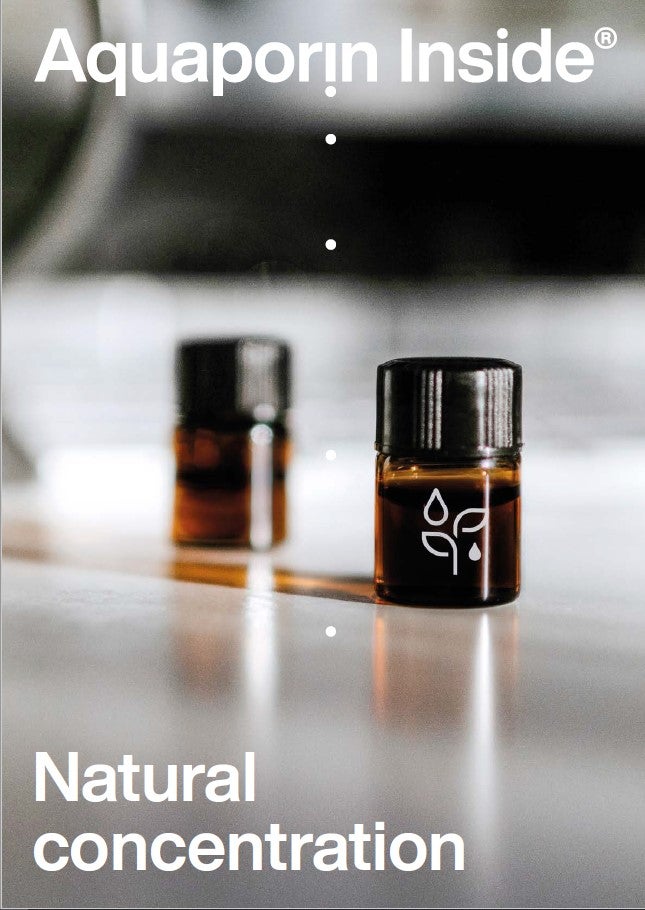
After what seems like a couple of years hiatus, the world has rebounded with people relieving themselves of pent-up energy with a burst in travelling for business and pleasure. This is evidenced by the snaking queues at airports and the amount of foot-traffic at terminals. It is not just travel that have come back to life but also people’s taste buds with the demand for exotic flavours resurging.

Aquaporin Inside, Natural concentration
The whitepaper explores Aquaporin Inside, a natural concentration technology and outlines how it can mitigate the loss of essential aromas and flavours of food and beverage products.
The technology can be used to retain and enhance the quality of a wide range of products, from coffee and tea extracts to natural food flavoured and alcoholic drinks.
Thank you.Please check your email to download the Brochure.
For clarification, it is not exotic flavours but mores specifically, natural exotic flavours that are being sought after.
Flavours consisting of the aromas from lemon, cherry, strawberry, lychee and passionfruit are some examples, all coming from the named fruit or FTNF for short. It must be natural and clean; synthetic or compounded (natural) flavours are not in flavour anymore.
There are many ways to capture the FTNF aroma as well as the natural aromas from foods including mint, cardamom, spices and other botanicals. Steam stripping is one such way where steam is used to “strip” the volatile aroma compounds where it is then condensed and captured in an aqueous phase. But this technique may be fraught with danger as high temperatures and long residence times (time inside the stripping system) are involved, meaning any fragile compounds being stripped, may be either damaged or lost during the process. By combining a reduction of the temperature with the residence time, these fragile aromas can survive and eventually be appreciated by the consumer.
An Australian technology manufacturer, Flavourtech, has been producing systems to enable manufacturers to capture the natural flavours from the named source. Their core and unique technology utilise a spinning cone column (SCC) to ensure the high quality of the flavours, due to the low residence times and low operating temperatures. So, how does it work?
In order to produce natural flavours and aromas, the SCC employs low-temperature steam to strip or distil the light volatile components that comprise the aroma. We all know steam and how hot it can be; however, the SCC allows the user to control the temperature of steam by controlling the vacuum pressure around it – increasing the vacuum decreases the steam temperature. So, in this case, low-temperature steam is used to extract the natural fruit flavours which means the flavours are safe and intact. The whole process takes less than 30 seconds. These extracted fruit flavours are concentrated, in water and are fully natural so can easily be combined in beverages and food products.
Fruits including strawberry, banana, mango, grape, kiwi, apple, orange, pineapple and many more, have had their flavours extracted and are currently available on the market. The extracted aroma is a powerful version of the real fruit flavour.
Flavour houses are already benefiting from the SCC – the flavours are being added to beverages and foods to provide the natural that consumers are looking for. Fruits are not the only flavours in demand; natural tea and coffee flavours continue to be sought after as they are still the most consumed beverage after water.
Flavourtech has recently partnered with Aquaporin, a Danish company producing Forward Osmosis (FO) systems, to further help in this space. FO is a membrane technique relying on the osmotic pressure difference between two solutions on opposite sides of a membrane. In other words, water travelling from one side of the membrane with low solids to the other with high levels, subsequently concentrating the former solution, due to concentration gradients, mimicking cell membranes in the human body. The benefits of this process are low hydraulic pressure, low operating temperature, low fouling of membranes, and the ability to process to higher concentrations.

Aquaporin’s Inside® FO membranes are key to the further concentration of aqueous aroma solutions post-Flavourtech’s SCC. When it comes to the sale of these products, manufacturers must contend with the cost of logistics. Being able to reduce the cost of logistics while maintaining the quality is of utmost importance. Normally concentration will involve a heating step (such as in an evaporator), where temperature is applied to remove water. FO does not. The FO process separates the water from the aqueous aroma while maintaining the integrity of the product, a concentrate of the aroma is produced.
Start with the Spinning Cone Column (SCC) to capture the natural flavours from the named source and then concentrate this aqueous phase through the Forward Osmosis technologies. Complex natural flavours from coffee, tea, fruits, vegetables, spices and herbs are captured and concentrated.
Flavour houses as well as food and beverage manufacturers see the benefits of combining natural flavour capture and concentration technologies. They provide higher-quality products, which in turn means consumers benefit from more health qualities and with better natural flavours. If you would like to be one of the leaders in this field, then please contact Flavourtech.com.

Aquaporin Inside, Natural concentration
The whitepaper explores Aquaporin Inside, a natural concentration technology and outlines how it can mitigate the loss of essential aromas and flavours of food and beverage products.
The technology can be used to retain and enhance the quality of a wide range of products, from coffee and tea extracts to natural food flavoured and alcoholic drinks.
Thank you.Please check your email to download the Brochure.
